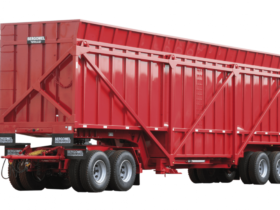A lush, green lawn is a source of pride for many homeowners, and achieving it often involves selecting the right lawn fertilizer. With various types and formulations available, choosing the best fertilizer for your lawn can be overwhelming. This guide provides a comprehensive overview of lawn fertilizers, helping you make an informed decision to achieve a vibrant, healthy lawn.
Understanding Lawn Fertilizers
Types of Lawn Fertilizers
- Granular Fertilizers: These are solid fertilizers that come in pellet or granular form. They are applied to the soil and release nutrients over time. Granular fertilizers can be either quick-release, which provides immediate nutrients, or slow-release, which gradually feeds your lawn.
- Liquid Fertilizers: Liquid fertilizers are applied directly to the lawn with a sprayer. They are absorbed quickly by the grass and provide fast results. Liquid fertilizers are ideal for immediate nutrient boosts and can be used in conjunction with granular fertilizers.
- Organic Fertilizers: Made from natural materials such as compost, bone meal, or manure, organic fertilizers improve soil health over time. They release nutrients slowly and enhance the soil’s microbial activity, contributing to long-term lawn health.
- Synthetic Fertilizers: Synthetic or chemical fertilizers are manufactured to provide specific nutrient ratios. They offer rapid nutrient availability and are often more concentrated than organic options. However, they can lead to soil imbalances if not used correctly.
Key Nutrients in Lawn Fertilizers
- Nitrogen (N): Essential for promoting lush, green growth. Nitrogen is the primary nutrient for leaf and stem development.
- Phosphorus (P): Important for root development and overall plant health. Phosphorus helps establish strong root systems and enhances flowering.
- Potassium (K): Crucial for overall plant health, disease resistance, and drought tolerance. Potassium helps in the synthesis of proteins and sugars.
Choosing the Right Fertilizer for Your Lawn
- Soil Testing: Conduct a soil test to determine the nutrient levels and pH of your soil. This information helps you choose a fertilizer that addresses specific deficiencies and improves soil health.
- Grass Type: Different grass types have varying nutrient needs. For example, cool-season grasses like Kentucky bluegrass may require different nutrients compared to warm-season grasses like Bermuda grass.
- Seasonal Considerations: Fertilizer needs vary by season. In spring, focus on nitrogen to encourage growth. In fall, use a balanced fertilizer with higher potassium to prepare the lawn for winter.
Applying Lawn Fertilizer
- Timing: Apply fertilizer at the right time of year to match the growth cycle of your grass. Avoid fertilizing during extreme temperatures or drought conditions.
- Application Methods: Use a broadcast spreader for granular fertilizers to ensure even distribution. For liquid fertilizers, follow the manufacturer’s instructions for dilution and application rates.
- Watering: After applying fertilizer, water your lawn to help nutrients penetrate the soil and reach the roots. Follow recommended watering schedules to prevent nutrient runoff.
Common Fertilizer Myths and Misconceptions
Over-fertilizing can harm your lawn by causing excessive growth, increased thatch, and nutrient runoff. Follow the recommended application rates and avoid applying more than necessary.
Fertilizer Alone Will Fix Lawn Problems
While fertilizers provide essential nutrients, they do not address underlying issues such as poor soil structure or pest infestations. Consider a holistic approach to lawn care, including proper mowing, watering, and pest management.
Conclusion
Choosing the right lawn fertilizer is crucial for achieving a healthy, vibrant lawn. By understanding the different types of fertilizers, assessing your lawn’s needs, and applying fertilizer correctly, you can enjoy a lush, green lawn that enhances the beauty of your home. Invest in the right fertilizer and follow best practices to achieve a thriving lawn year-round.







